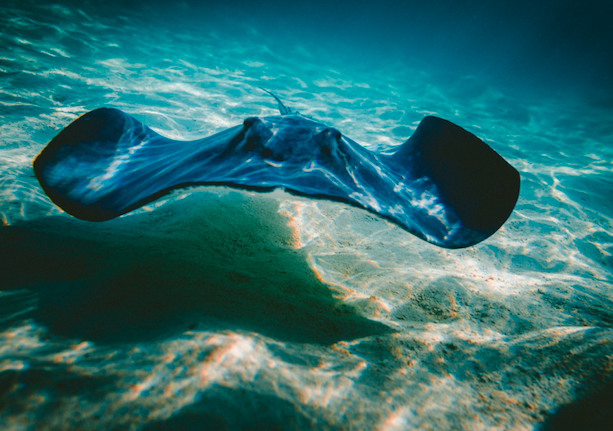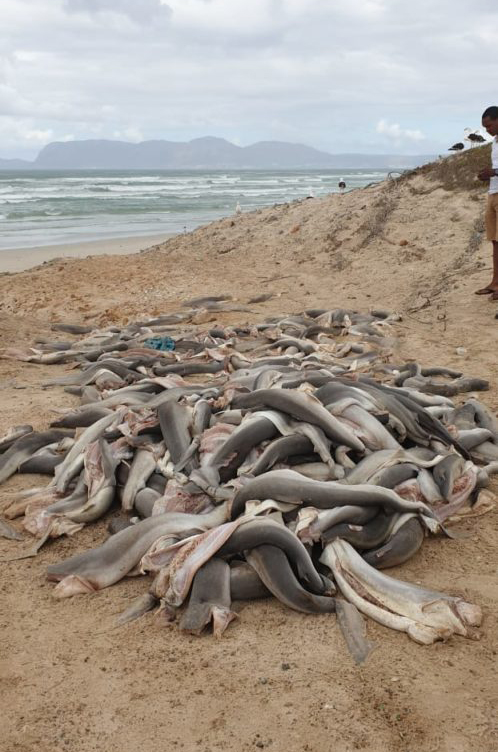Sharks and rays have become the second most threatened vertebrate group, after amphibians. This is according to a recent study that found that over one-third of sharks and rays are threatened with extinction, and The Conversation reporting on the findings as a ‘wake up call.’

Picture: Getaway Gallery
According to The Conversation, The IUCN red-list shark specialist group reassessed the extinction risk of all species of sharks and rays. This was an eight-year project that included hundreds of experts from around the world to compile data needed to shed light on the status of sharks and rays.
And their findings revealed a group of animals in dire straits. Of the 1,199 species of sharks, 391 (32,5%) are classified in one of the three threatened categories: critically endangered, endangered and vulnerable. Additionally, 123 (10,4%) are near-threatened and 529 (44.1%) are of least concern. The other 156 or 12.9% are data deficient.
The new research also revealed where the most shark and ray biodiversity is being lost. On average, 75% of coastal sharks and rays are threatened, and this is much higher in the tropics and subtropics, where 80-85% of coast sharks are under pressure from small -scale fishing fleets.
Where fishing industries are intense, iconic shark species are long gone, such as sawfishes in West Africa, or very recently disappeared such as wedgefishes in United Arab Emirates and Bangladesh. The catch is now dominated by the smallest and least economically valuable species, such as bamboo sharks, smooth-hounds and stingrays.
South Africa’s Shark Fishing
It seems like South Africa has more to worry about than the disappearance of great whites from the Cape’s waters. With the UK and USA recently takings steps towards banning the shark fin trade, in South Africa, certain shark species are still targeted in the long-line fishing industry.

The soupfin shark is predicted to go extinct in South Africa before 2055 at current fishing rates. Picture: Flickr Commons
According to the Status of South Africa’s Marine Resources Paper published by the Department of Environment, Forestry and Fisheries, South Africa has one of the most diverse chondrichthyan (sharks, rays and chimaeras, or ‘shark’) faunas in the world, with 204 species recorded, many species caught in ‘appreciable’ quantities

Soupfin sharks dumped on False Bay’s Strandfontein Beach. Image: Chris Fallows
According to this report, 99 shark species are impacted by fisheries as incidental bycatch, but less than 10 shark species are targeted. Substantial catches include Shortfin Mako and blue sharks, utilised to subsidise tuna catches when tuna is unavailable in fishing grounds.
The demersal longline fishers are the only sectors that consistently targets sharks, with the sector formally commenced in 1991 with 30 permits issued. This shark longline fishing is only permitted in coastal waters from the Orange River on the West Coast to the Kei River on the East coast.
The most commercially valuable sharks are soupfin and smoothhound sharks, with the latter making its way as far as Australia, where it is served, unbeknown to consumers, as part of their ‘fish and chips,’
With South Africa’s annual demersal shark catch for 2020 reeling in 391 tons, the status of our soupfin sharks is rather worrisome. At the current rate of depletion, the species is predicted to go extinct before 2055. Urgent steps are therefore needed to curb the loss of soupfin sharks, with the department of fisheries arguing that shark catch needs to be reduced to 75 tons annually.
ALSO READ
















